Perennial chrysanthemums: varieties, planting and care
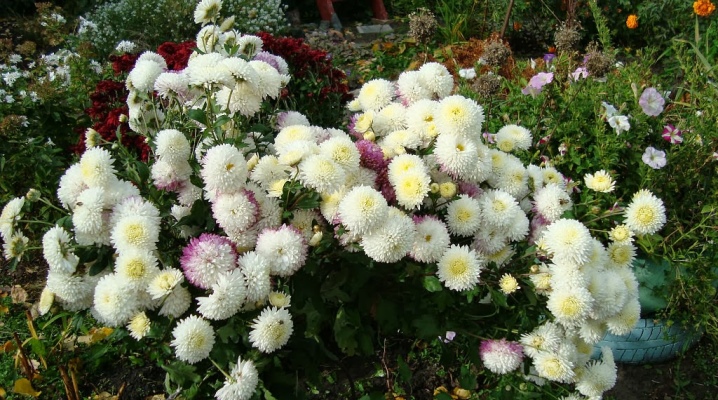
Chrysanthemum is a flower whose beauty is difficult to describe in words. The plant is gorgeous, bright, and attracts a lot of attention. Beautiful perennial chrysanthemums can become a real decoration of landscape design or interior design if grown in a beautiful pot. However, the beauty and health of this wonderful flower depends on proper care by a person. In today's article, we will analyze how to properly plant chrysanthemums and take care of them in the future.


Peculiarities
Chrysanthemum got its interesting and memorable name because of its similarity to the sun. Translated from Greek, this is what it sounds like - "flower-sun". This blooming beauty was brought to Europe from the Far East, where people treated her with special trepidation. In the New and Old Worlds, chrysanthemum was recognized as a welcome and expensive addition to autumn gardens.
Chrysanthemum is a herbaceous ornamental plant, the height of which can reach 1.5 m (medium size autumn variety). This spectacular-looking plant can grow without problems both outdoors and at home, living in a cozy pot. The inflorescences of this flower are large or miniature baskets of various shades. Plants can be propagated by seeds or cuttings.


The inflorescences of perennial chrysanthemums are not always small. There are both mid-flowered and large-flowered specimens. Such plants can be grown not only to decorate garden estates, but also for subsequent cutting. They are often decorated with balconies, terraces and loggias. Medium-flowered ornamental bushes can grow in height from 30 to 70 cm.The usual flower diameter is from 10 to 18 cm.
Large-flowered chrysanthemums are the queens of flowers. These are very showy and tall plants, blooming with large flowers (diameter from 10 to 25 cm). But it must be borne in mind that large-flowered specimens are not too frost-resistant and freezing temperatures can affect them very badly. Only certain varieties are winter-hardy and are able to winter without problems in open ground conditions. In most cases, these flowers are grown to be cut into chic, lush bouquets.
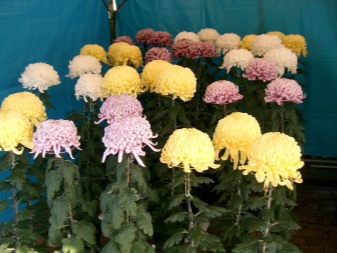

The color of the buds of perennial chrysanthemums is varied. They can be white, yellow, orange, red, lilac, lemon green - there are a lot of options.
Such a variety of colors is unlikely to be found in other horticultural crops.
Types and varieties
Chrysanthemums are classified into many types and varieties. Each of them has its own distinctive features and external characteristics. All types of chrysanthemums are united by their beauty and luxurious colors.
Let's take a closer look at the most popular species and varieties of this beautiful plant.



Large-flowered
These types of chrysanthemums are the most spectacular, large and attractive. As mentioned above, they do not tolerate low temperatures well. Only certain varieties can be an exception.
The large-flowered types of chrysanthemums include the following popular varieties.
- Zembla. Terry beauty. It can be a chic decoration for flower beds, flower beds or alpine garden slides. In open ground it grows up to 90 cm, and in a home pot - only up to 30. Zembla buds exude a delicate honey aroma.The plant is distinguished by large reed-shaped petals. One branch can grow from 1 to 3 buds.

- Tom Pierce. The petals of this chrysanthemum are distinguished by their original yellow-red color, which attracts a lot of attention. Very beautiful and rich bouquets are obtained from such flowers. The variety is very lush, loves sunny areas, grows up to 40-60 cm.

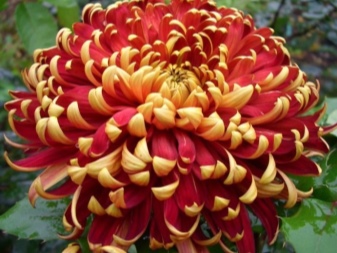
- "Shamrock". Garden spherical chrysanthemum. A bushy plant with a green color. The average size of the stem is 70-80 cm. Very fragrant, beautiful variety. Suitable for cutting. In a vase, such a spectacular chrysanthemum can stand up to 20 days.

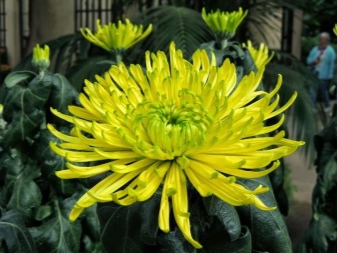
Mid-flowered
This type of chrysanthemum includes a large number of interesting varieties. Here are the most popular and frequently encountered ones.
- "The Golden Fleece". Spectacular flowers with a rich yellow-orange color, for which they got their name.

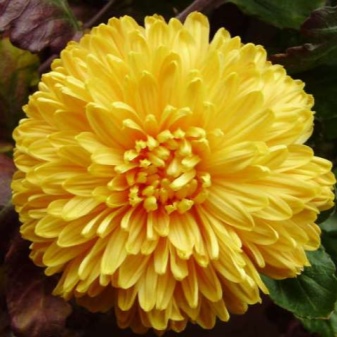
- "Splashes of champagne". Shrub plants, the height of which can be 90 cm. The flowers have a needle-like structure, a delicate light pink color with an unobtrusive dusting of yellow in the middle. Size - from 8 to 10 cm.

- Beautiful flowers of the variety are also often found. "Pink chamomile".
These types of plants can be grown both in the garden and on the balcony.


Korean
Korean chrysanthemums are small-colored, border, medium-sized and tall. They are beautiful flowers that come in many different varieties. Let's consider the most popular examples.
- "Alyonushka". A shrub plant, the height of which can be 50 cm. The inflorescences are not double, they are chamomile, they are distinguished by a deep pink color. Chrysanthemum blooms in September.


- "Pearl". Straight bushes, reach a height of 50 cm. Inflorescences are white, semi-double. Flowering falls in July.


- "Amber". Medium-sized variety. It is a dense bush. Terry inflorescences have a bright yellow color. The size of the flowers is about 7 cm.
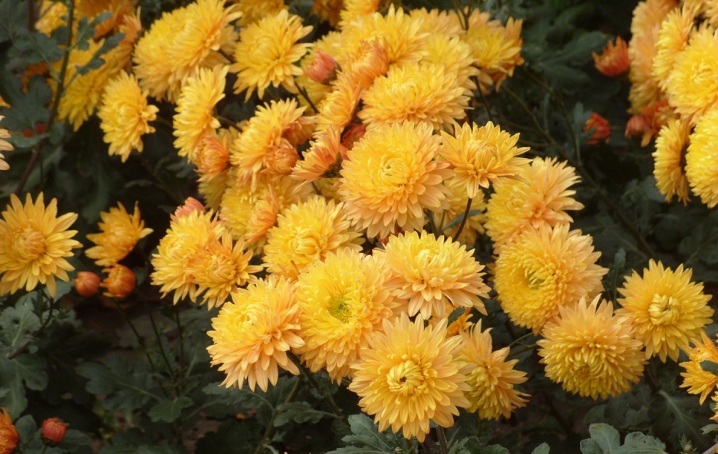
- "Evening Lights". A charming plant, it reaches a height of 35 cm. A small bush with scarlet inflorescences that are not terry.


- "Malchish-Kibalchish". The curb bush reaches a height of 28 cm. It blooms profusely, chamomile-type inflorescences. The plant is characterized by a delicate lilac-pink color.


Korean varieties are often grown in areas where temperatures are low in winter. This plant thrives in Siberia, although its homeland is the eastern countries.
Undersized
Low-growing species of chrysanthemums have many different varieties. Let's get acquainted with the most interesting and common specimens.
- Alpine chrysanthemum. A perennial plant, whose height rarely exceeds 15 cm. The foliage grows from the roots, the stems are straight, do not branch. The plant blooms in the summer. Alpine variety is not afraid of cold weather.


- Indian varieties. These varieties of plants, like Chinese, Korean, belong to a stunted species. Indian chrysanthemums grow in the form of small bushes with light flowers. These dwarf varieties are best grown only in home pots - they are not suitable for outdoor use.


- "Maiden" chrysanthemum. A compact plant, the height of which rarely exceeds 80 cm. It has a highly branching stem, decorated with a large number of small inflorescences. The foliage has rounded edges.
The plant is unpretentious.


There are many more species and varieties of the crop in question. Flowers are also subdivided into the following varieties:
- simple: these types include the varieties "Amazonka", "Andre Rose", "Baltika";
- terry: this includes the varieties "Zlata Praga", "Gazella", "Trezor".



Perennial bush plants are also divided according to the level of frost resistance:
- cold-resistant: this includes Korean varieties and the Susan variety;
- for mild climatic conditions - "Fantasy".


By flowering time, these plants are divided into the following types:
- early: these include the varieties "Hands", "Deliana" (September flowers);
- medium: varieties "Froggy", "Orange" (bloom in October);
- late: these types include the varieties "Rivardi", "Larisa" (November flowers).
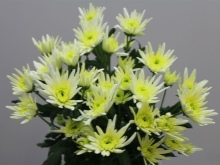
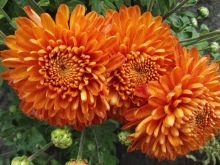

Choice by region
You should choose certain varieties of chrysanthemums, taking into account the climatic conditions of the region in which you are going to plant them. So, if there is a desire to grow such a crop without problems even in the harsh conditions of the Far North, then it is best to choose a Korean variety for planting. It is permissible to plant it in the Urals, like the Velvet Autumn variety. If we are talking about territories with a milder, non-aggressive climate, then here you can grow grade "Fantasy".
The maximum resistance to cold is characterized by Susan`s Bonnet variety... It can be grown even in regions with very cold winters.


Chrysanthemums take root well in the Moscow region. Here they are grown both from seeds and cuttings. Some gardeners resort to the method of dividing the bush. Plants do well in the local climatic conditions.
If you want to grow only large-flowered varieties of this gorgeous plant, then it should be borne in mind that they take root well in the southern regions. For all other territories, it is advisable to select more cold-resistant specimens. Choosing a specific variety for growing in your region, it is better to consult with experienced florists or contact the sales consultants of the garden store.
Knowledgeable people will tell you which varieties of flowers it makes sense to buy, and which ones will not grow in your place of residence.

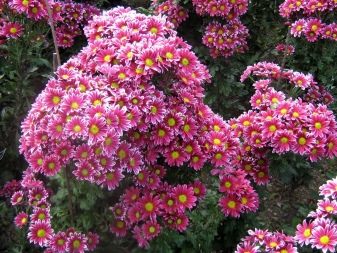
How to plant?
It is important to plant the perennial chrysanthemum correctly, following all the rules, taking into account all the nuances of the process. Only if these requirements are met, it will subsequently be possible to enjoy the beauty of the plant.
Before planting chrysanthemums, you need to find a suitable place for them. The site must be sufficiently lit. Chrysanthemums bloom weakly in the shade: in such conditions, the flowers will be very small, and the stems will be too long, since they will drag on in search of the missing light. The site must be well protected from winds and drafts.

Choosing the best place for planting chrysanthemums, you should take into account the following nuances:
- the soil should be good for both moisture and air;
- the soil must be loose;
- you can use soil of almost any type and composition, the exception will be heavy clay;
- it is desirable that the plants be planted in fertile soil, otherwise the flowering will not be lush;
- it is better to choose slightly acidic soil.

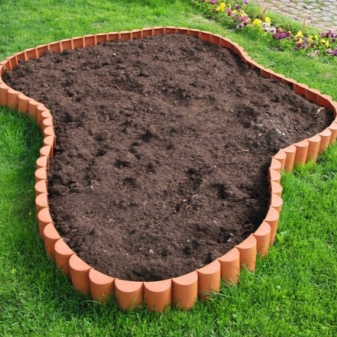
Chrysanthemums should be planted correctly according to this plan.
- First you need to prepare the holes. Their depth should be about 40 cm.A gap of 40 cm should be left between the grooves, and 50 between the rows.
- A drainage layer should be laid out at the bottom of each of the pits, for example, from sand or stones.
- You will need to pour a handful of humus into each hole, and then make good watering of the soil.
- Further chrysanthemums are planted in this wayso that they are not too deep.
- Stable pegs should be installed nearby. Subsequently, they will become a good support for the bushes.



How to take care of it properly?
It doesn't matter what kind of chrysanthemum grows on the site - pompom, spherical, terry or any other - all types require competent care. Without it, not a single variety will bloom and delight people with its beauty.
Caring for perennial chrysanthemums usually does not cause any difficulties for gardeners.
Even a novice gardener who has not previously taken care of such plants can easily cope with such procedures. It is very important to provide the flower with regular and correct watering. Chrysanthemums are very sensitive to lack of moisture. If you water this plant a little, then its flowers will be very small and rare, and in some cases, the stems may become stiff.Too much water should also be avoided, because this inevitably causes chrysanthemum roots to rot.
It is important to stick to the golden mean - the ground under the bush should always be slightly damp. It is imperative to monitor the weather conditions. In the heat, water the flower more often, and in the cold - less often.

Chrysanthemums cannot be left without mineral and organic fertilizers. It is recommended to apply mineral dressings every 2-3 weeks. During the growing season, there should be more nitrogen in fertilizers, and in the future, the emphasis will need to be placed on potassium and phosphorus.
Three times a season it is necessary to feed the chrysanthemum with mullein tincture. It must be diluted 1:10 with water. About 1 liter of the prepared solution is poured under each bush. In the morning of the next day, the soil must be loosened.


Preparing for winter
If you are growing chrysanthemums on your site, you need to properly prepare them for the winter season. All preparatory procedures depend on the cold resistance of the selected variety, as well as on the characteristics of the region where the flowers will meet winter.
If winters are too harsh in your region and you decide to keep a perennial at home, then you need to prepare it for frost like this:
- after the arrival of the first frost, a bush with an earthen lump should be dug;
- plant the chrysanthemum in a suitable pot;
- sprinkle on wet soil;
- put the plant in a basement or cellar, where it will be cool, but the temperature will not be below zero;
- it will be necessary to water the flower at least 2 times a month.



In the open field, frost-resistant chrysanthemums must be prepared differently:
- hilling plants so that there are no depressions around;
- on the sides of the flowers, place the boards on which the covering material will lie on top;
- with the onset of the first frost, fill the plants on top with foliage, spruce branches, branches.


Wherever the plant winters, it is necessary to constantly monitor its condition. It is important to notice any diseases in time, otherwise the flower will not survive the winter. In early September, you need to feed the chrysanthemum with fertilizers with phosphorus and potassium. Nitrogen must not be added.
In the first half of November, before frost, it will be necessary to trim the stems, leaving about 10 cm from the root system.


Reproduction
Chrysanthemum propagation occurs in different ways. Let's get acquainted with them.
Splitting the bush
This breeding method looks like this:
- first a bush is dug up, excess earth is shaken off it;
- old woody stems are removed;
- young shoots are separated;
- they are cut if they are too long;
- then they are planted in different holes, making indents of 25 cm between them.


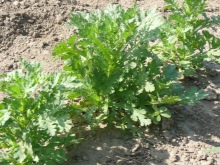
Rooting cuttings
Chrysanthemum propagation can also occur by cuttings. So, many gardeners undertake to grow this flower from a once lush and rich bouquet. This is done like this:
- you have to wait for the plant to bloom;
- further, the stem must be cleaned of inflorescences and foliage;
- cut off the top;
- put in water;
- when the first roots appear, the cuttings will need to be moved to neutral or slightly acidic soil (the depth should be no more than 5 cm);
- followed by the usual care.
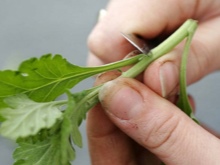


It is recommended to cut the material for grafting in the spring. Plants must be well examined - they must be absolutely healthy.
Seed method
Most often, seeds are chosen for growing chrysanthemums. In this case, the gardener will need to do the following:
- it is necessary to prepare containers filled with drainage and loose fertile soil;
- it is advisable to sow seeds in early spring (ideally, this should be the beginning of March);
- it is necessary to carefully lay out the seeds of the plant on the surface, moisten the soil with a spray bottle;
- sprinkle the seeds with a thin earthen layer of 3-4 mm;
- the first shoots will appear in 7-10 days;
- after the appearance of the first 2-3 leaves, a pick is carried out.
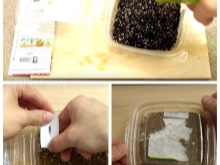

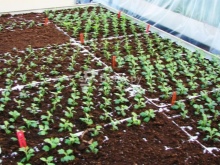
Diseases and pests
Chrysanthemums, like any other garden plants, are susceptible to various diseases and pest attacks. Most often, these flowers suffer from the following ailments.
- Ring spot. With this disease, yellowish spots appear, the leaves wither.
- Dwarfism. With this disease, growth stops, the flowers remain very small.
- Seedlessness. Deformation of inflorescences occurs, they lose their color.
- Mosaic. With this disease, characteristic mosaic-type stains appear on the foliage.
- Powdery mildew. If such a serious illness occurs, the chrysanthemum is almost completely covered with a whitish bloom.
- Rust. This disease manifests itself in the formation of red spots and yellowing of the foliage.
- Gray rot. With this ailment, the flower becomes covered with a grayish bloom, and its rotting begins.
- Septoria. Yellow spots appear on the plant.


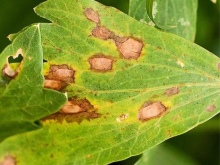
To treat these diseases, special drugs are usually used, for example, colloidal sulfur, copper oxychloride or Bordeaux liquid.
In addition, pests can also attack chrysanthemums.
- Aphids and spider mites. They feed on plant juices, leading to discoloration and wilting. Pests can be removed with a strong water jet or by using insecticides and a copper-soap solution.
- Leaf nematode. These are roundworms, which infect chrysanthemums, after which yellow-brown spots appear on them. Over time, they merge, the plant dries up. This parasite is removed along with the replacement of the soil. In spring, its spread will prevent mulching. An effective way of dealing with nematodes is a spray containing insecticidal soap.



Use in landscape design
Chrysanthemums can become a gorgeous decoration of the landscape if they are planted in beautiful round flower beds framed with light natural stones.


Ball-shaped chrysanthemums can revive the design of a site if they are planted under a fence along its entire length. It is advisable to plant multi-colored specimens so that the picture is brighter and more colorful.
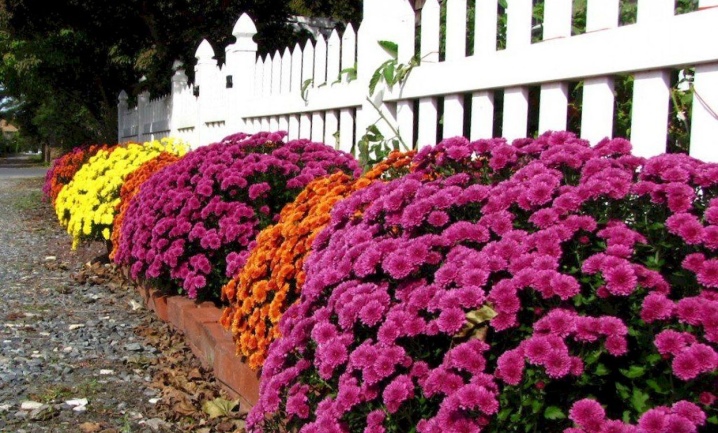
Chrysanthemums, planted in beautiful pots, can be placed along the paths and paths on the site. It is permissible to plant both monochrome and multi-colored flowers. Thanks to this framing, the paths will become more colorful.


For more information on chrysanthemums, see the next video.







































































































The comment was sent successfully.